June 2017 Ideas and Innovation
Read the articles selected in June 2017
How Egypt’s love for cats helped our feline friends colonise the planet
by Ian Johnston
Source: The Independent, 20 June
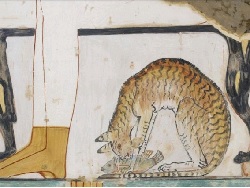
A study published on Nature Ecology & Evolution reconstructs the long adventure of cats from Near East across the world. Appeared in the Near East during the Neolithic, left the Ancient Egypt, which depicted it in domestic contexts, going to the conquest of the Western thanks to its skills in catching mice.
See attached
Le blob, génie unicellulaire
by Nathaniel Herzberg
Source: Le Monde, 21 June
“Physarum polycephalum” is a not well-known organism, a flabby pigmented mass, self-nourishing and -reproducing, with a brain, memory, moving and reaction capacities, which interests not only biologists but also engineers for its electronic potentialities in the development of hybrid systems.
See attached
Santé
Source: L’Obs, 15 June
All our cells are female or male: the way we fall ill, the symptoms, the genetic predisposition change from a gender to another, yet the traditional medicine is based more on the observation of male body. Not everybody knows that infarct is the first cause of death in women, before the breast cancer.
See attached
Europe backs missions to search for Earth-like planets, deep space cataclysms
by Daniel Clery
Source: Science, 20 June
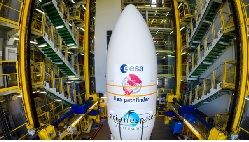
The European Space Agency has approved PLATO and LISA’s missions: PLATO will search habitable planets orbiting around sunlike stars through 26 telescopes, continuously looking around 50% of the sky. LISA aims to detect gravitational waves in space to reconstruct the biggest universe cataclysms.
Read more:
En attendant le sang artificiel, les dons restent indispensables
by Damien Mascret
Source: Le Figaro, 14 June
Blood donations in the world can’t satisfy the need of the Planet. A équipe of the University Pierre-et-Marie-Curie has experimented the production of red corpuscles injected into a patient successfully. Researchers now stake on the passage from the laboratory to the factory for an industrial delivery.
Neuroscientist says brain training could heal a broken heart
by Ian Sample
Source: The Guardian, 9 June
Researchers at Cambridge University are experimenting computerized tests to reduce impulsivity in psychiatric patients, but useful also to dull the pain of a broken love. Moreover, paracetamol and aspirin seem work in the same brain circuits that produce emotions.
Computers are starting to reason like humans
by Matthew Hutson
Source: Science, 14 June
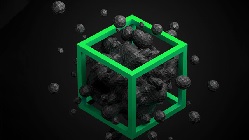
Researchers at Google’s Deep Mind have created an algorithm able to reproduce relational reasoning, a complex form of thought difficult to apply to machines. The ability to perform comparison tasks is an important step in the direction of a flexible artificial intelligence.
Read more:
http://www.sciencemag.org/news/2017/06/computers-are-starting-reason-humans
The “time machine” reconstructing ancient Venice’s social networks
by Alison Abbott
Source: Nature, 14 June

After the digitation project funded by the Italian Ministry of Cultural Heritage in 2006, the Venice Time Machine thanks to the current technologies intends to give a pluri-dimensional view of the cultural and commercial reality of this and other European historical centers.
Read more:
https://www.nature.com/news/the-time-machine-reconstructing-ancient-venice-s-social-networks-1.22147
Time may be fuzzy. If so, the idea of causality may be in trouble
Source: The Economist, 8 June
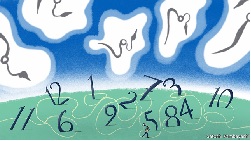
In the Gedankenkenexperimente around the dimension of time and published in Proceedings of the National Academy of Sciences, quantum mechanics meets relativity theory, to question the location in space and in time and the notion of time linearity.
Oldest Homo Sapiens fossil claim rewrites our species’history
by Ewen Callaway
Source: Nature, 7 June
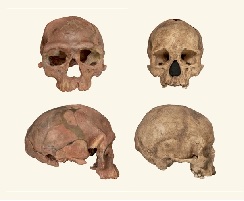
Remains found at the Moroccan site of Jebel Irhoud show that Homo sapiens appeared more than 100.000 years earlier than our previsions. This more primitive human had a lineage comparable with modern anatomy, and a mix of features originating from all the continent.
Des “métamateriaux” pour des IRM du cerveau plus précises
by Marc Cherki
Source: Le Figaro, 5 June
M-Cube, a project funded by the Horizon 2020 programme, intends to experiment metamaterials for clinical use to empower MRI images, cutting the exposition time and the utilization costs of the machines.
A radical proposal for preventing rare genetic diseases
by Lee Cooper
Source: Wired, 6 June
Thousands of rare genetic diseases make many millions of patients in every country. The only way to prevent these illnesses in our genealogical tree is the preimplantation genetic diagnosis made during in vitro fertilization. It’s time for a more open dialogue about this therapeutic treatment.
Jupiter’s secrets revealed by NASA probe
by Alexandra Witze
Source: Nature, 25 May

The results of NASA’s Juno mission on Jupiter are changing our models of giant planets: the spacecraft has discovered a surge of ammonia rising from the planet’s equator, a magnetic field stronger, patchier and more complex than prefigured, as well a larger core.
Read more:
http://www.nature.com/news/jupiter-s-secrets-revealed-by-nasa-probe-1.22027
A life or death pioneer in cancer treatment’s new frontier
by Laurie Mcginley
Source: The Washington Post, 29 May
Immunotherapy could attack advanced cancers not responding to chemotherapy. New drugs work in cancers due to a genetic defect, called MMR deficiency, and with a high number of mutations. This new perspective encourages patients to try clinical trials.
La guerre contre les bactéries lancée dès l’arrivée à l’hôpital
by Soline Roy
Source: Le Figaro, 30 May
In the USA every year 100.000 people die for infections caught during a hospitalization. A study published in Science Translational Medicine analyzed the bacterial exchanges that happen in a health structure to better understand their propagation.
No lifeguards in the gene pool
Source: The Independent, 30 May
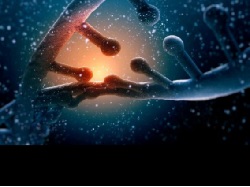
The solution for climate change and population growth can’t be found on another planet. Humanity should first fight against its Selfish Gene and address the no rational aspects of its condition. A new civilization elsewhere in the universe couldn’t move with the same human, disastrous flaws.
Go to the content
May 2017 Ideas and Innovation
Read the articles selected in May 2017
Los coches que pueden salvar las ciudades
by Milagros Pérez Oliva
Source: El Paìs, 25 May
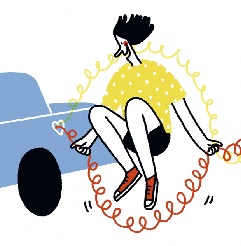
80% of urban pollution is due to traffic on wheels. The UE states 400.000 premature deaths caused by air pollution every year. Car sharing seems the most rational solution so far. After the Bloomberg report, electric energy as an alternative is clean only if it comes from clean sources.
Read more:
http://elpaissemanal.elpais.com/documentos/coches-inteligentes-salvar-ciudades/
Das Internet becommt ein Institut
by Tilmann Warnecke
Source: Die Zeit, 24 May
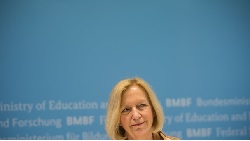
In Berlin starts with 50 million euros funding the Deutsche Internet-Institut, a consortium of five universities and research institutes devoted to the social and political effects of the digital revolution, from the citizens’ democratic self-determination to the transformation of labor world.
Read more:
http://www.zeit.de/digital/internet/2017-05/deutsche-internet-institut-berlin-digitalisierung
Virus hunters draw a map of Zika’s spread with Dna
by Megan Molteni
Source: Wired, 24 May
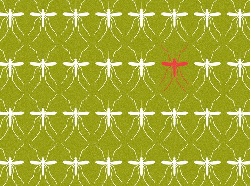
Researchers of Oxford and Birmingham universities have developed a technique called “molecular clock”, based on the number of genomic mutations, to anticipate the time the virus Zika takes to outbreak in different places, before the official reports. The study is published in Nature.
Read more:
https://www.wired.com/2017/05/virus-hunters-draw-map-zikas-spread-dna/
“Disco bacteria” could churn out drugs and useful chemicals
Source: The Economist, 25 May
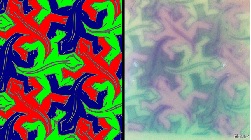
In an experiment published in Nature Chemical Biology, an MIT biologist altered 18 different genes of Escherichia coli to develop photosensors able to regulate the expression of bacterial genes and that could be used to make chemicals or drugs.
Read more:
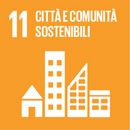
How to fix climate change: put cities, not countries, in charge
by Benjamin Barber
Source: The Guardian, 8 May
A paucity of resources and the absence of autonomy and jurisdiction prevent cities from playing a protagonist role in facing global warming. Yet cities could be the forefront of sustainable development. As political institutions of the planet’s majority, they have a natural right to take action against climate change.
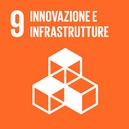
Satellite images reveal gaps in global population data
by Jeff Tollefson
Source: Nature, 9 May
The Bill & Melinda Gates Foundation has created an unprecedented detailed and updated map to chart human settlements around the globe. Its data are based on satellite-imagery and computer-learning algorithms and are crucial for a better management of public health and infrastructures especially in developing countries.
Read more:
https://www.nature.com/news/satellite-images-reveal-gaps-in-global-population-data-1.21957
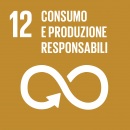
Edible water: how eating little balls of H2O could be the answer to the world’s plastic pollution
by Julia Platt Leonard
Source: http://www.independent.co.uk, 14 April
A new packaging technology for water, a seaweed–based membrane that holds liquid, could become an alternative to plastic bottles. While these take 700 years to decompose and are recycled only in a half, seaweed is a renewable material that can be produced locally.
Read more:

Inclusive innovation policies
by Sandra Planes-Satorra & Caroline Paunov
Source: http://www.oecd.org/
Inequalities are a big challenge for our societies, which reverberates in educational attainment and health status. Innovation policies can play a key role to promote inclusion of disadvantaged groups and individuals, boosting activities critical for economic growth and job creation, including research and entrepreneurship.
Read more:
The shock tactics set to shake up immunology
by Douglas Fox
Source: Nature, 3 May
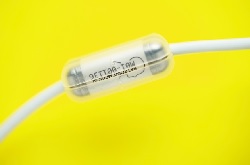
The vagus-nerve stimulation, already used to treat epilepsy and depression, seems promising for the cure of autoimmune diseases. The vagus nerve, which putatively connects the brainstem to the sympathetic nervous system, links the nervous with the immune system.
Read more:
Ghana telescope heralds first pan-African array
by Sarah Wild
Source: Nature, 9 May

In Ghana the first radio telescope in the continent outside South Africa, converted from an obsolete telecommunication dish, could be incorporated in a European network of far-apart radio instruments but it will also produce separate research to develop an African astronomy.
Read more:
https://www.nature.com/news/ghana-telescope-heralds-first-pan-african-array-1.21958
Your future virtual assistant may develop ideas of its own
by Steven Overly
Source: The Washington Post, 8 May
After the development by the artificial intelligence of human-initiated virtual assistants that do what we command, a virtual assistant robot will proactively interact with us storing and analyzing information about our daily lives, helping us, especially if we are elderly, socially isolated and physically inactive.
Early human fossil find questions evolution theories
by Ian Sample
Source: The Guardian, 9 May
The remnants of 18 Homo Naledi found near Johannesburg, dated between 335000 and 236000 years ago, which corresponds to the same time of Homo sapiens, display extraordinary primitive as well modern characteristics, showing that human evolution is not a linear progression.
Silicon Valley’s mission to save California ag from dying of thirst
Source: Wired, 4 May

Water scarcity threatens crops in California, the top agricultural producer in USA. In the Silicon Valley, some start-ups help farmers to optimize water and fertilizer application. The climate change urges to fill the gap between agriculture and technology sectors.
Read more:
https://www.wired.com/2017/05/silicon-valley-aims-save-californias-water/
Gibt es im Sonnensystem Spuren früherer Zivilisationen?
by Jan Dönges
Source: Die Zeit, 3 May

In a paper published on the “International Journal of Astrobiology” the SETI Institute astrophysicist Jason Wright asserts that the spoors of evolved civilization are more likely to be found on the Earth and in the neighbour planets than in a further solar system.
Read more:
El mecanismo del cerebro che explica los déja vu
by Jaime Rubio Hancock
Source: El Paìs, 3 May
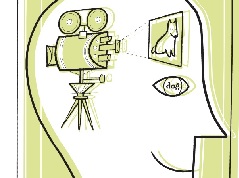
After a recent theory, the déjà vu is to explain as a conflict between brain areas simultaneously active, the areas dedicated to memory like the hippocampus, and the frontal lobes that have functions of supervision and control.
Read more:
http://verne.elpais.com/verne/2017/04/10/articulo/1491838302_593606.html
How to protect women against both HIV and pregnancy
Source: The Economist, 4 May
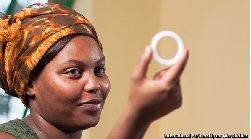
A US Charity (IPM) has developed a silicone device that combines an anti-HIV drug with a contraceptive. They hope after the first trial that with the sales in the rich world they will able to distribute the product to poor countries where the need is greatest, given the statistics on the infection.
Read more:
Un utérus artificiel pour les extrêmes prématurés
Source: Le Monde, 27 April
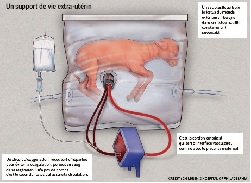
A team of researchers in Philadelphia is texting an incubator for premature lambs, born without chance of surviving. This artificial uterus, able to ensure the maturation of lungs, can’t allow evaluating yet its long-term effects on the animal and the possible application on humans.
The rise of sex robots
Source: The Guardian, 27 April

The first sex machines, presented at Abyss Creations’ factory in San Diego, California, are going to inaugurate the market of humanoids for domestic service.They are designed like dolls, do combine artificial intelligence and motion-sensing technologies, talk and learn their owner’s tastes.
How NASA visualizes stunning worlds without really seeing them
by Emma Grey Ellis
Source: Wired, 27 April

Artists rendering of scientific data about exoplanets are imaginative visions that can do without making exoplanets and their beauty analogous to the Earth as if they’d been “seen” by scientists, but it’s only an illusion that brings them to the knowledge in all the world.
Read more:
https://www.wired.com/2017/04/nasa-visualizes-stunning-worlds-without-really-seeing/
Go to the content
April 2017 Ideas and Innovation
Read the articles selected in April 2017
L’intelligence artificielle reproduit nos préjugés
by Morgane Tual
Source: Le Monde, 18 April

AI programmes based on data drawn out from milliards of existing texts, do reproduce without lying, as a logical calculus, recurring words’ associations as well cultural prejudices.The EU is studying a legal protection for the victims of discrimination, almost racial and sexist.
La télématique, bientôt automatique
by Éric Gibory
Source: Le Monde, 13 April

With eCall, a geolocalised device for SOS which will be compulsory for new vehicles beginning from 2018, telematics is going to invade the transports sector, promising not only more safety but also to economize costs and energy consumes.
Un Livre blanc prône un tiers état de la recherche
by Davis Larousserie
Source: Le Monde, 29 March
A White Paper published by the European Commission proposes to mobilize the knowledge society “from below”. Given that research, and not politics, does produce knowledge, it’s important to create the third estate of research involving citizens, that actually are left out of politics and innovation.
The untold story of the back-room team that saved Apollo13
by Henry Gendreau
Source: Wired, 19 April
Mission control: the unsung heroes of Apollo is a documentary about the story of Apollo13, told not from the side of the astronauts, but of the NASA officers that prepared and planned missions trough tiny details, and in case of emergencies were able to take out improvised capacities.
Read more:
https://www.wired.com/2017/04/untold-story-back-room-team-saved-apollo-13/
Machines qui pensent
by Céline Henne
Source: Le Monde, 7 April

The scenarios forecasted about superintelligent, conscious and self-determined machines are part of a science-fiction imaginary without a real content. Inhabitants of the real are not self-conscious robots, but humans who decide their utility and the rules of the game.
Robot takeover’s costs may be more than we imagined
by Jeff Guo
Source: The Washington Post, 10 April
The massive loss of jobs within an industrial sector reverberates through other sectors, harming entire communities for a generation, but technology creates also new opportunities, desires, and jobs. Even auto manufacturing requires more human labor. Education is indispensable.
Earth-like “water world “ with steamy atmosphere aids search for alien life
by Ian Sample
Source: The Guardian, 7 April

The evidence found on the planet GJ 1132b, 39 light years away, in a steamy atmosphere could represent a sign of life, encouraging research on alien existence. The planet is rich in water, but with a too high temperature to be up now considered habitable.
Mars’ionosphere: cold, lifeless, and filled with heavy metals
by Emma Grey Ellis
Source: Wired, 11 April

NASA’s Maven mission has realized the permanent fixture in Mars atmosphere of metal ions, which are found also on Earth, where they work differently. It's about these different dynamics, that scientists are in search of new perspectives on the universe.
Read more:
https://www.wired.com/2017/04/mars-ionosphere-cold-lifeless-filled-heavy-metals/
Boston, capitale mondiale des biotechs
by Philippe Jacqué
Source: Le Monde, 31 March

Massachussetts represents a pole of excellence for international research on biotechnologies, a financial and industrial ecosystem for the startups that are in the right place to rapidly develop the most innovative discoveries of fundamental research.
Une synapse artificielle
by David Larousserie
Source: Le Monde, 5 April
Some French researchers have built an electronic, artificial synapse, a step forward in the competition for the programming of learning processes, similar to those triggered in the brain by neurons and their billions of connections.
Robot revolution will be a legal minefield, report says
by Owen Bowcott
Source: The Guardian , 4 April
After a report by IBA, a global forum for the legal profession, the robotics development is changing labor and employment law, that will have to take in account the increasing automation of jobs, establishing “human quotas” in any sector and reshaping the liabilities in the insurance sector.
Oh great. Climate change will make flying worse, too
by Eric Niiler
Source: Wired, 6 April

Climate change will trouble the airline industry with an increase by 59 percent of light turbulence, and by 149 percent of truly severe turbulence, that means a cost of hundreds of minor injuries and dozens of major injuries. But airlines are developing onboard systems to stabilize aircraft.
Read more:
https://www.wired.com/2017/04/climate-change-and-flying/
Perspective: the one-health way
by Laura H. Kahn
Source: Nature, 29 March
The concept of “one health” links human well-being with the health of animals and of the environment. Comparative medicine studies the illnesses of animals as signs of environmental contamination and helps to identify environmental, genetic and dietary risk factors for cancer and other diseases.
Read more:
http://www.nature.com/nature/journal/v543/n7647_supp/full/543S47a.html
Animal health
by Herb Brody
Source: Nature, 29 March
Humans and pets are especially intertwined in the exchange of benefits as well some infections, but the global environment including all the world’s creatures is threatened by climate change. Migrating Arctic species put new health risks. A holistic approach would do best.
Read more:
http://www.nature.com/nature/journal/v543/n7647_supp/full/543S41a.html
Analysing brain signals to let a patient control his arm
Source: The Economist, 1 April

A paralyzed man has been able with the help of electrodes implanted in his brain and in his arm to grasp a fork and feed himself. This technique has used functional magnetic-resonance to highlight the patch of the brain concerned in the movement and computer algorithms to detect the intention to move the arm.
Read more:
Managing supplies of vaccines is a huge problem
Source: The Economist, 30 March
A study by UNICEF signals that overchilling of vaccines is the most important problem that plagues their storage and is more common in the rich world than in the poor. Although the consequences in terms of numbers are unknown, childhood vaccination is crucial to prevent million of deaths.
Read more:s
Go to the content
January Ideas and Innovation
Read the articles selected in January 2017
Hybrid zoo: introducing pig-human embryos and a rat mouse
by Sara Reardon
Source: Nature, 26 January

The creation of pig-human and other hybrid fetuses, injecting pluripotent stem cells from one species to another and using CRISPR gene-editing technology, has been reported for the first time in a peer-reviewed paper. That gives researchers the hope to create in the future a human organ in an animal donor.
Read more:
http://www.nature.com/news/hybrid-zoo-introducing-pig-human-embryos-and-a-rat-mouse-1.21378
First human-pig chimera is a step toward custom organs
by Megan Molteni
Source: Wired, 26 January

The combination of human cells in animal embryos to create organs for transplant generates hybrid beings that raise ethical questions and could unlock functions suppressed during evolution and develop unexpected organs.
Read more:
https://www.wired.com/2017/01/first-human-pig-chimera-step-toward-custom-organs/
Printed human body parts could soon be available for transplant
Source: The Economist, 28 January

Three-dimensional printing is transforming the medicine. While bioprint tissue is already being sold for drug testing, biotechnology firms are working to print blood vessels, skin, cartilages, and are expected to print organs in few years.
Read more:
http://www.economist.com/news/science-and-technology/21715638-how-build-organs-scratch
New weather satellites can spot floods before they happen
by Emma Grey Ellis
Source: Wired, 26 January

On January 15th the NASA’s next-generation weather satellite started to send its images, with a resolution able to distinguish clouds from ice and fog and to spot sulfur dioxide emissions and volcanic eruptions. With GOES -16 weather prediction, turbulence forecasts, storm warnings will improve.
Read more:
https://www.wired.com/2017/01/new-weather-satellites-can-spot-floods-happen/
DARPA’s biotech chief says 2017 will “blow our mind”
by Dina Fine Maron
Source: Scientific American, 9 January

The Pentagon’s research and development division is working on some biological engineering projects to develop new compound and drugs from microbes like yeast and bacteria and is pioneering research on nucleic acid approaches to immunization against infectious diseases.
Read more:
Fighting cancer’s crisis of confidence, one study at a time
by Megan Molteni
Source: Wired, 19 January

Cancer’s research real problem is that much of its data was never validated, so a group of scientists called the Open Science Collaboration is reexamining the results from the 29 most important cancer papers of the last few years.
Read more:
https://www.wired.com/2017/01/fighting-cancers-crisis-confidence-one-study-time/
The touchy task of making robots seem human – but not too human
by Margaret Rhodes
Source: Wired, 19 January

We are made to anthropomorphize the world, and especially the objects that are our prosthesis, like robots. But if the right amount of anthropomorphism promotes their utility, a too humane machine distracts and triggers unrealistic expectations.
Read more:
https://www.wired.com/2017/01/touchy-task-making-robots-seem-human-not-human/#slide-1
How can you control your dreams?
by Jordan Lite
Source: Scientific American, 29 July 2010

Researchers and therapists are developing techniques to control dreams, helping to solve problems or to end recurring nightmares, while, like in science-fiction, new technologies could understand in real time what a person is dreaming about.
Read more:
https://www.scientificamerican.com/article/how-to-control-dreams/
La révolution des neurones artificiels
by David Larousserie
Source: Le Monde, 11 January 2017
The deep learning is not just the technologic revolution that mimics the neuron synapsis on the base of millions of data empirically repeated: even if far from realizing all cognitive functions, especially the reasoning, it has become a model of cerebral activity, reinventing the philosophy of science.
See attached
The mechanics and design of a lightweight three-dimensional graphene assembly
by Zhao Qin, Gang Seob Jung, Min Jeong Kang & Markus J. Buehler
Source: Science, 6 January
Graphene, one of the strongest available materials, applied to porous materials combines strengths with lightness and in three-dimensional form is suited to engineering applications. 3D graphene assembly offers mechanic properties different from conventional polymeric foams.
Read more:
http://advances.sciencemag.org/content/3/1/e1601536.full
A cardboard centrifuge separates blood cells from plasma
Source: The Economist, 10 January

A cardboard disc made to spin like a centrifuge through a string punching it in the center is not always a stuff for boys: an ingenious researcher at the Stanford University invented a device that is a cheap and light alternative to the laboratory machines that analyze medical samples.
Read more:
Quantum computing is real, and D-Wave just open-sourced it
by Klint Finley
Source: Wired, 11 January

A Canadian company has developed a technology that makes quantum computing a field for developers not necessarily trained in quantum physics through open-source software, freely shareable and modifiable, that provide solutions of problems not perfect, but probably good.
Read more:
https://www.wired.com/2017/01/d-wave-turns-open-source-democratize-quantum-computing/
Go to the content
December 2017 Ideas and Innovation
Read the articles selected in December 2017
November 2017 Ideas and Innovation
Read the articles selected in November 2017
October 2017 Ideas and Innovation
Read the articles selected in October 2017
September 2017 Ideas and Innovation
Read the articles selected in September 2017
August 2017 Ideas and Innovation
Read the articles selected in August 2017
July 2017 Ideas and Innovation
Read the articles selected in July 2017
March Ideas and Innovation
Read the articles selected in March 2017
February Ideas and Innovation
Read the articles selected in February 2017

